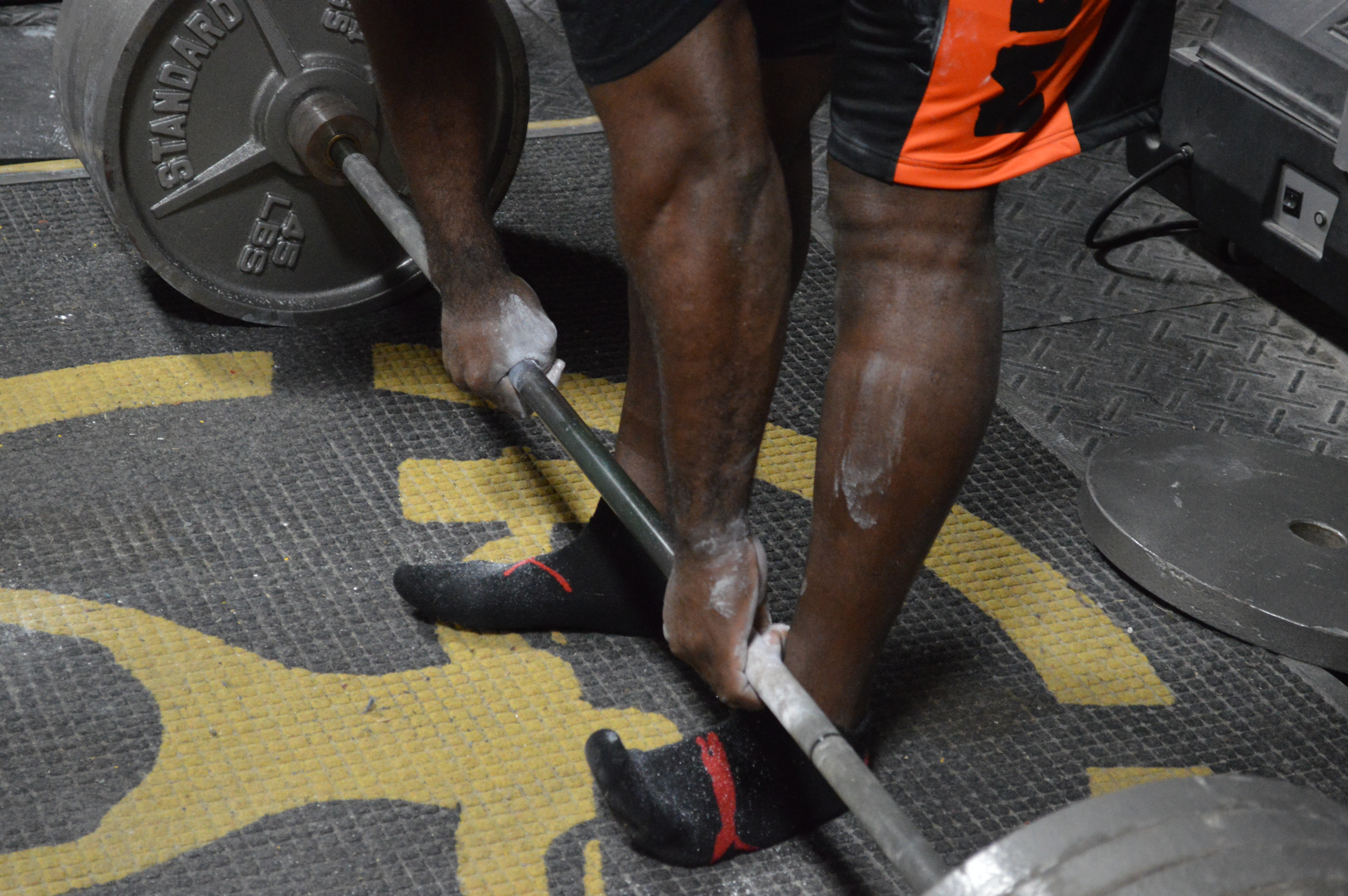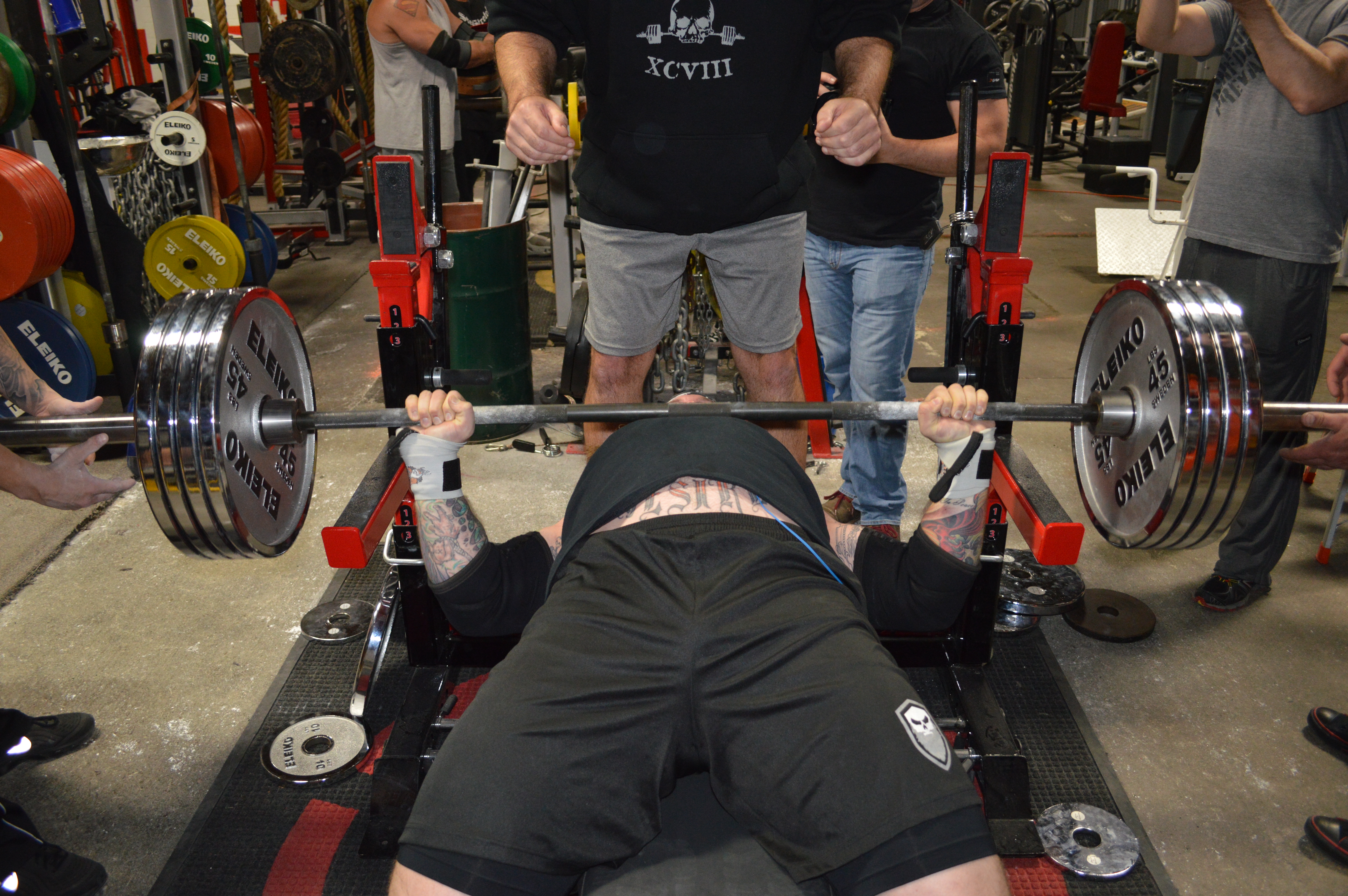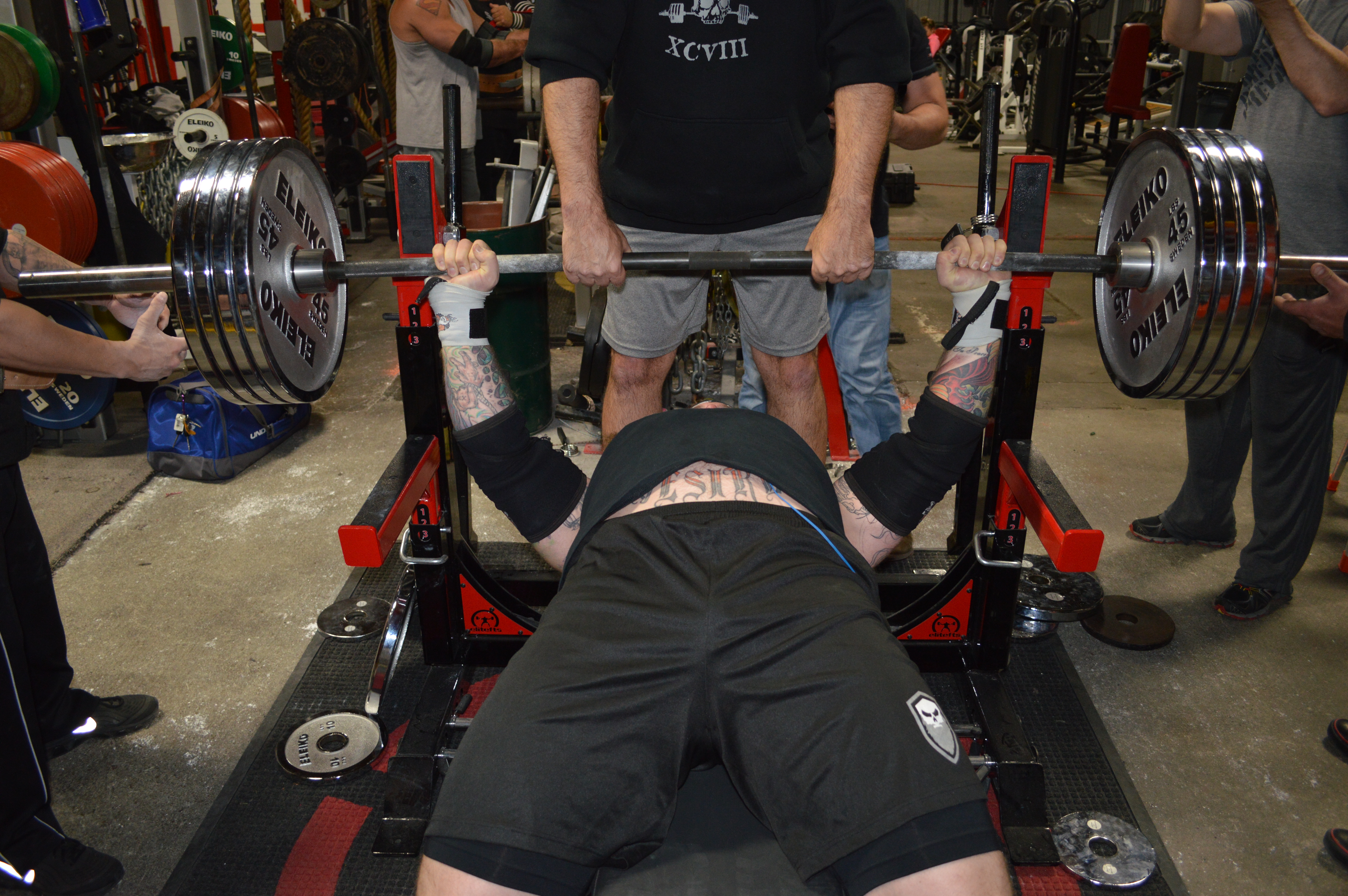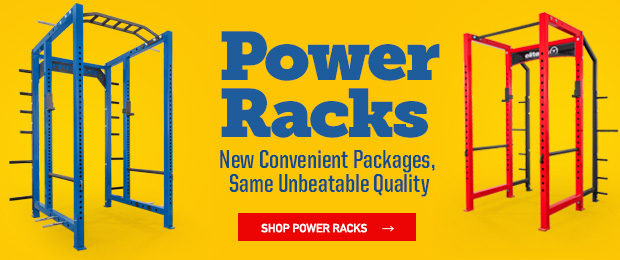
“Give me a place to stand, and with a lever I will move the whole world.” – Archimedes
I was introduced to the magic of levers when I was a kid watching my dad add a deck to our house. Our land was rocky, and nearly every posthole was cut short by a rock—usually footstool-or-bigger boulder. For these, my dad used a six-foot pry bar to rip them from the earth. It was a revelation when he let me try one: I felt like Superman.
Discussion of levers—fine-grained discussion, including concepts like moment arms—has been a hot topic of late in strength articles, and with good reason. Leverage concepts are fundamental to force production. I can think of a half-dozen writers who’ve addressed the topic with sincerity in the last year or so, including the great work done by elitefts’ own Chris Duffin. I could add almost myself to the list: when writing the Strength 101 series for elitefts, levers/moment arms were something I left out for reasons of word count and deadline.
I’m not going to get into math and schematics too much. Instead, I want to talk about how we think about levers. If we consider the moving body a collection of simple machines, levers constitute the largest portion and are the most relevant to lifters.
Why the Sudden Interest?
I think the biggest reason we’re hearing about levers today is that no one talked much about them before, leaving the topic ripe for discussion. Why not? Because, outside of basic positioning, you can’t really change your levers. You can’t sell improved levers at your sport-supp store. There isn’t a secret Russian method for moving the origins and insertions of your muscles.* Short of serious surgery or other intervention, you can’t actively change the length of your bones.
Unlike Archimedes’ example, though, our bodies are generally disadvantaged by longer levers when it comes to strength movements. One reason is that Archimedes intimated that he would use a (very long) first class lever to achieve his feat, which is the best-known of the three classes of lever.
Lever Basics
As you might recall from first-year Intro to Biomechanics and/or third grade, there are three kinds of levers:
First Class Lever
A first class lever has the fulcrum in between the force and the load. See-saws/teeter-totters are the most commonly used examples. My dad’s rock bar was also a first class lever; the fulcrum was just the edge of the hole it rested on.
Second Class Lever
A second class lever has the load between the force and the fulcrum. The wheelbarrow is the most common real-world example. When you do a standing calf raise, you’re creating a second class lever: force is applied at the heel, while the ball of the foot is the fulcrum. The resistance actually occurs at the middle of the foot where the load-bearing bones of the lower leg terminate at the arch bones.
Third Class Lever
A third class lever has the force between the resistance and the fulcrum. Shoveling and rowing a boat are both uses of third class levers. Hammer curls are a gym-based example.
The lever created by the elbow, forearm, and triceps brachii during extension is first class, same as Archimedes’ hypothetical planet mover.** Recall that Archimedes would’ve needed a very long lever to achieve his results. By the same token, my Dad wouldn’t have had much luck removing the boulders if he’d used a crowbar or claw hammer. Long lever arms can be vital to making first class levers function. But if that’s the case, then why are longer arms seen as a detriment during extensions and presses?
The answer lies in fulcrum placement. In a first class lever, placing the fulcrum near the load provides greater force, but less speed and a shorter distance of movement. Archimedes would’ve placed the fulcrum to his 9 million-light-years-long lever as close to the earth as he could to get the most force possible. (Note that he didn’t say he’d move the world quickly or a certain distance.) Get the fulcrum closer to the effort, though, and force is diminished while speed and distance go up. Pressers have to deal with the fact that when the triceps are used in extension, the effort and fulcrum are sandwiched on top of each other at the farthest possible distance from the load. The longer a lifter’s forearms, the worse the situation gets.
Moments and Moment Arms
Levers are more dynamic than their classification as “simple tools” might imply: their effectiveness actually changes during use. “Moment” and “moment arm” terminology helps us quantify force and changes in force during lever actions. A force’s moment is a measure of its ability to move something about a single point, which is a joint when we’re talking about lifting. The moment arm is an imaginary line that originates at the fulcrum and intersects perpendicularly with the direction force is being applied; being perpendicular, this line will also be the shortest possible line to the direction of force. There are actually external and internal moment arms, but they’re way beyond the scope of my discussion here.
When it comes to single joints, this stuff doesn’t really matter to a lifter. Just lifting a weight during a single-joint exercise will clue you in to where you’re strongest and weakest during the movement. And, short of messing with exotic handles and extension devices, you can’t do much to tinker with things. Just know that when you see someone talking about these things, the details won’t be very relevant to you unless you’re a sport-sci professional or hobbyist.
The concepts of leverage get more interesting with the compound lifts, though. The deadlift is a perfect example. Think of it as a hip hinge combined with a slight leg extension. The primary movement being the hinge, the hamstrings and glutes apply most of the force, the hips serve as the fulcrum, and the stiffened spine acts as a lever arm. Depending on your setup, it’s pretty easy to change the relationship of your hips to the barbell. You can stick your butt out, straighten the legs, bend the legs, change your stance, round your back, move your grip, and more. A lifter with any experience knows that in the simplest analysis hip and leg extension are stronger at the top of a movement than at the bottom; we can quantify this with torque measurements, but let’s leave the math aside. Instead, let’s address levers in the context of the competitive lifts.
Leverage and Technique: Starting Point, or the Final Word?
I think the Johnny-come-lately aspect of levers in the consumer S&C readership has vaulted them to an undeserved place in terms of a lifter’s technique. Read the comments on articles and instructional videos and you see people eager to drop whatever technique patterns they’ve developed in order to modify their moment arms/fulcrums/angles/whatever. You can probably guess that I disagree with the approach. In fact, I’ve been a self-inflicted victim of such thinking.
Rather than representing the ultimate definition of technique, knowledge of levers is instead a ground-floor tool that’s subservient to other factors. Let’s stick with the deadlift to show what I’m getting at. Like all the competition lifts*** the deadlift is an extension-based lift. First, the sumo deadlift. The sumo dead is a pure expression of a lift designed to take advantage of levers. That wide stance gets the hips closer to the bar, allowing for a more upright back angle. In a conventional dead, close hips would necessitate a narrow, disadvantageous knee angle, but thanks to the spread stance, they’re more extended than they would be otherwise. A wider stance allows for better leverages all around, therefore a stance where the toes touch the plates is the best possible stance for everyone. Right?
Remember, it’s not just the lever position that’s important, but also the ability to apply force with that lever. That ultra-wide stance might be ineffective in the end because you lose more strength from the involved muscles than you gain from the advantageous lever. For example, a lifter genetically gifted with large quadriceps might be better served with a semi-sumo stance because the muscular advantage of his quads over his adductors and glutes outweighs the leverage advantage. Ed Coan famously demonstrated this in competition when he factored fatigue and leverages into his decision to change stances during his deadlift attempts.
Your body also needs the integrity to accommodate favorable angles, and here the sumo serves as a good example. There’s no two ways about it: a wide stance puts a lot of strain on your glutes. I lost years of deadlift gains when I switched from sumo to conventional, but I had to do it because my glutes couldn’t handle the tension. I was a walking glute strain. And I’m not alone with this problem. Plenty of competitive lifters run into the same issue, and for many the only solution is wearing deadlift briefs to help provide support during training.
Finally, there’s some choice involved when it comes to getting the hips closer to the bar: you can drive the knees over the bar (as many North European lifters have preferred) or you can open your hips (as is common advice here in the states). There are subtle differences between these approaches involving all the factors cited above, and shades of movement and position that are a bit nuanced for the brute math of levers.
Everything I’ve mentioned so far has been documented thoroughly either in labs or under the bar. Let’s revisit the conventional deadlift to explore some hypothetical territory. The “ideal” conventional deadlift in terms of levers and safety has some components common to every frame: fairly vertical shins with the bar close by, and a hip height roughly halfway between the knee and the shoulder. Different ratios of limb and torso length will change the measurables, though the relationships will stay the same.
There are two common technique variations that sit outside these parameters. One is a powerlifter-favored style with a near stiff-legged hip height and a bar placed several inches away from the shins. The other is a clean-style dead where the hips are low and the knees are angled over the bar. Both styles have resulted in massive deadlifts and wins at meets, yet they seem to defy leverage basics by either displacing the fulcrum in the first example, or by putting the knees in a poor position in the second example.
I think the totality of a lifter’s training experience can help explain these variations. The clean-style is, not surprisingly, favored by lifters with Olympic-style backgrounds. Essentially, their nervous systems and muscles have been shaped over years and decades to accommodate to the technique demands of the clean. Similarly accommodated are their accessory lifts, of which the deadlift is often one. It’s conceivable that for a lifter this steeped in the Olympic style, changing technique might ultimately be a waste of time, especially if the lifter is transitioning from Olympic to powerlifting competition.
I think the demands of geared powerlifting can similarly help explain high-hipped technique. In geared meets, it’s not uncommon for the squat to be a significantly stronger lift than the deadlift—often by several hundred pounds in the heavier weight classes. For the sake of competition, then, it makes sense to specialize in the geared squat, which itself is best maximized by a deep sit-back that stretches the hamstrings and the squat suit itself. Repeating this exaggerated sit-back would essentially dial in extreme efficiency in the movement pattern, meaning that a geared lifters might find themselves stronger—leverages or not, equipment or not—setting up for a deadlift in a deep hinge.
Of course, these ideas are hypothetical for a reason: we don’t have a measuring stick for how lifters adapt to technique changes. It may be these example lifters can (and should) adapt to techniques with better leverages, without concern for their backgrounds because new techniques can be quickly adopted. As with most things in S&C, I imagine there’s a lot of individual variability involved.
Thinking of individual variability, I’ve been anticipating for a while now that anthropometric analysis was going to be the next big tool for guiding lifting technique, though so far I’ve been disappointed. Research that throws together various combinations of limb ratios and joint angles has only produced pedestrian results (e.g., short, thick arms are best for benching and other astounding insights). The lack of clear-cut outcomes in this line of thinking lends weight to the concept of treating leverages as one factor among many, rather than as an ultimate arbiter of technique.
I hope I’ve provided some good guidance for lifters trying to make sense of levers and leverages. If you have any questions or comments, feel free to post them in the comments below.
*Contrary to some speculation, muscle size doesn’t have much impact on mechanical advantage because the tendon insertions have little ability to hypertrophy, particularly in terms of increased diameter at the attachment site.
**This assumes an open-chain exercise. A push-up actually creates a second class lever.
***PL meets that include strict curls would be a clear exception.















